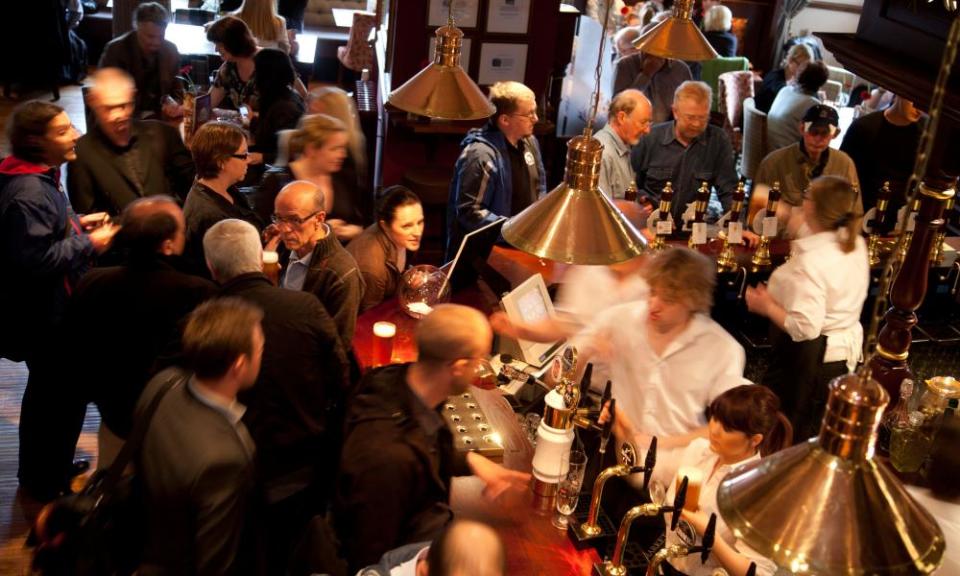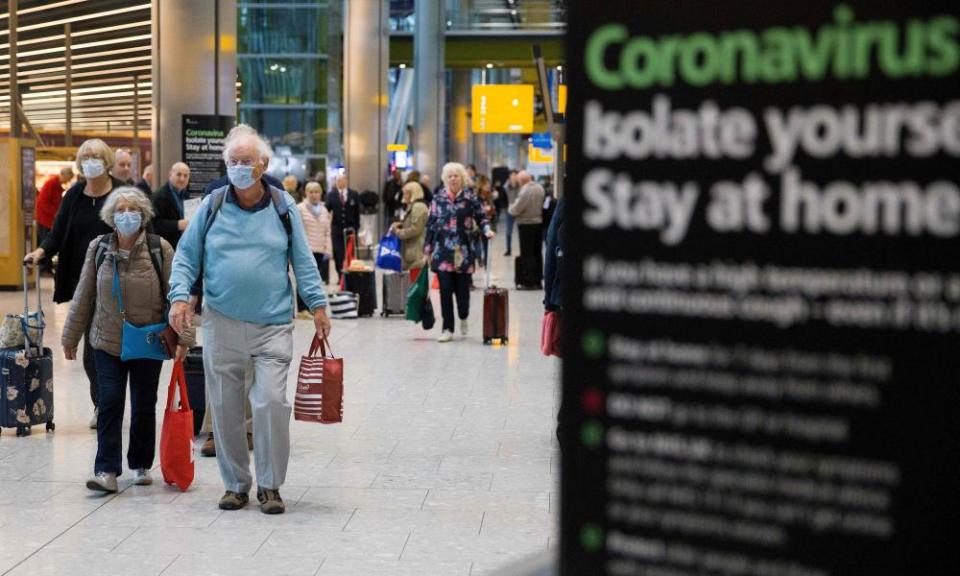Covid caution dampens the heady promises of ‘freedom day’

Statistics suggest that very little seems to have changed since 19 July, when the government ended all restrictions on socialising in England.
In London, people travelled less after so-called “freedom day” than during the weeks before, according to Transport for London figures. Elsewhere in the UK, where restrictions vary, there appeared little change in public transport activity. Restaurants and pubs saw a slight increase, but are still a long way off pre-pandemic levels.
CGA, the hospitality research agency, found that some people who had been happy to go out after the third lockdown ended in April had been put off by the fear of busy venues after 19 July.
Over-35s were less confident about going to pubs, bars or restaurants. Only 53% of 35-to-54s felt confident, according to CGA’s latest Consumer Pulse survey – down by seven percentage points since May – and just 39% of over-55s, a fall of nine points.
Jonathan Jones, CGA’s managing director for UK and Ireland, said it was clear confidence remained “fragile as Covid-19 cases remain high, especially among older age groups”. “Businesses will need to make it easy for hesitant consumers to plan their visits in advance, check availability and be sure they will have sufficient space,” he said.
Gary Murphy had hoped that “freedom day” would be the salvation of his pub. But on Friday, after 13 years in charge of Ye Olde Mitre Inne in High Barnet, north London, Murphy handed back the keys.
“Recovery is going to take years,” he said. “Trade has gone up a bit, but it’s still a slog. It became very clear that there are still a number of people who don’t want to go out – they’re still scared of the virus.”
Murphy said he had decided to retire as a licensee because he did not believe the situation would change for at least a couple of years. “When we had inside restrictions we were operating at about 60% to 70%,” he said. “Since we opened fully, we’ve gone up to 80%, but that 20% is going to be really hard.
“I know loads of people who used to be in here every day or every evening but will now only come in on Mondays when it’s really quiet.
“There’s a huge difference to last summer when people hadn’t got used to having their own parties or building their own bars. This time it’s very clear that people’s habits have changed considerably.”

Murphy listed rising prices of stock, staff shortages and the return of VAT on food, business rates and full rent demands from pub companies as major headaches for the trade.
Although legal restrictions have ended in much of the UK, 90% of adults wore face coverings when they were not at home, recent ONS figures revealed, and 88% thinking social distancing remains important.
Professor Stephen Reicher, who is part of the Scientific Advisory Group for Emergencies (Sage) subcommittee on behavioural science, said that the public’s behaviour was “crucial” in stopping the spread of the virus.
“The ONS data shows that people are still exercising caution in all areas – and that is critically important,” he said. “But there is only so much people can do individually and people still need support in order to keep themselves safe.
Related: As UK restrictions end, what will be the new normal for pubs?
“What happens next is very largely a matter of whether behaviour changes and how fast. Two behaviours in particular are key. One is whether people self-isolate when infected … and the other is how many contacts we have.”
The CoMix social contact survey, a weekly study by researchers at the London School of Hygiene & Tropical Medicine for Sage, shows that most adults of working age had contact with an average of no more than four people a week. “Contacts are far down from pre-pandemic and only slightly up on this winter and spring. If they were to go up to those of pre-pandemic levels it would have a huge consequence.”

 Yahoo Finance
Yahoo Finance 